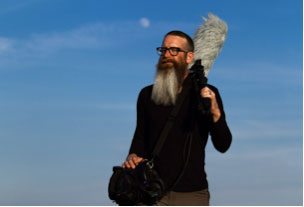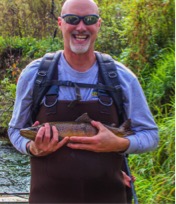Water Scholars Book Club 2021 July Book. Follow along as we post book reviews, resource lists, and content each month to support learning about a particular water topic.
By Laura Frescoln, Iowa Water Center
Quick Summary of the Book: Robert McFarlane takes us on a journey to the “underland” as he explores locations around the world that lie beneath our feet. This voyage is exquisitely detailed through our human senses and a cast of characters he meets along the way.
Why we selected it: Water is a fundamental force in the formation of the earth and the underland. Through the authors eyes, the reader gets a sense of the water’s presence and importance both in the formation and evolution of our culture and the physical aspects of our world over ‘deep time’.
I love exploring. Every summer I choose a new place for my two daughters and me to break from routine and experience something new. I do admit though, that apart from some “cave tours” that provided a sense of security through the sheer number of visitors that participate, we have not considered exploring the vast underworld. For one, I am sure I would be traveling alone, abandoned by my less adventurous kids who have a strong desire to survive. Secondly, I do have some claustrophobic tendencies. In fact, I cannot wear a hood.
Despite these challenges to explore the “underland” myself, I was intrigued by this book and the author’s experiences. McFarlane attributes the reluctance of “explorers” to dive into this world as intuitive and societal.
“Why go low? It is a counter-intuitive action, running against the grain of sense and the gradient of spirit (Pg. 11)…An aversion to the underland is buried in language. In many of the metaphors we live by, height is celebrated but depth is despised. To be ‘uplifted’ is preferable to being ‘depressed’ or ‘pulled down’.” (Pg.12)
McFarlane uses “deep time” as a metric to understand the evolution of this world.
“‘Deep Time’ is the chronology of the underland. Deep time is the dizzying expanses of Earth history that stretch away from the present moment. Deep time is measured in units that humble the human instant: epochs and aeons, instead of minutes and years. Deep time is kept by stone, ice, stalactites, seabed sediments and the drift of tectonic plates. Deep time opens into the future as well as the past. The Earth will fall dark when the sun exhausts its fuel around 5 billion years. We stand on our toes, as well as our heels, on a brink.” (Pg. 15)
Considering the metric of ‘deep time’ is almost unthinkable and certainly overwhelming to us humans who have such short memories and focused attention on the present. The author recognizes this and writes…
“There is dangerous comfort to be drawn from deep time. What does our behavior matter, when Homo sapiens will have disappeared from the Earth in the blink of a geological eye?…We should resist such inertial thinking; indeed we should urge its opposite – deep time as a radical perspective, provoking us to action not apathy.” (Pg. 15)
McFarlane uses quotes from other notable writers and scientist to introduce and sometime emphasize relevant points along this journey. As he notes, we are in the Anthropocene age which is largely influenced by human activity.
“But the Anthropocene, for all its faults, also issues a powerful shock and challenge to our self-perception as a species. It exposes both the limits of our control over the long-term processes of the planet, and the magnitude of the consequences of our activities…The Anthropocene asks of us the question memorably posed by the immunologist Jonas Salk: ‘Are we being good ancestors?’” (Pg. 77)
In the chapters that follow the introduction, McFarlane recounts expeditions in Britain, Europe (including “invisible cities”), Norway, Finland and Greenland. The adventures that follow throughout the pages are a rich collection of vivid descriptions of the both the physical world beneath our feet and the shared world of the people around us and beside us. This community is made up of the guides/friends who accompanied the author, those who came before and left their mark and those still to come. This community added layers of color, clarity and complexity.
The following excerpts from the introduction gives the reader a glimpse of what can be expected in the journey ahead…
“The way into the underland is through the riven trunk of an old ash tree. …Near the ash’s base its trunk splits into a rough rift, just wide enough that a person might slip into the tree’s hollow heart – and there drop into the dark space that opens below.” (Pg. 3)
We soon discover that the old ash is but one of the many passageways into the underworld. Each entrance formed through “deep time” as a footprint marking the geological and human forces at play.
“…down in the labyrinth beneath the riven ash. The same three tasks recur across cultures and epochs: to shelter was is precious, to yield what is valuable, and to dispose of what is harmful.”(Pg. 8)
Throughout the book as a whole, the author explores all three as he weaves humanity and the landscape together in a way that allows the reader to think, feel and wonder about the invisible world where few have traveled.




